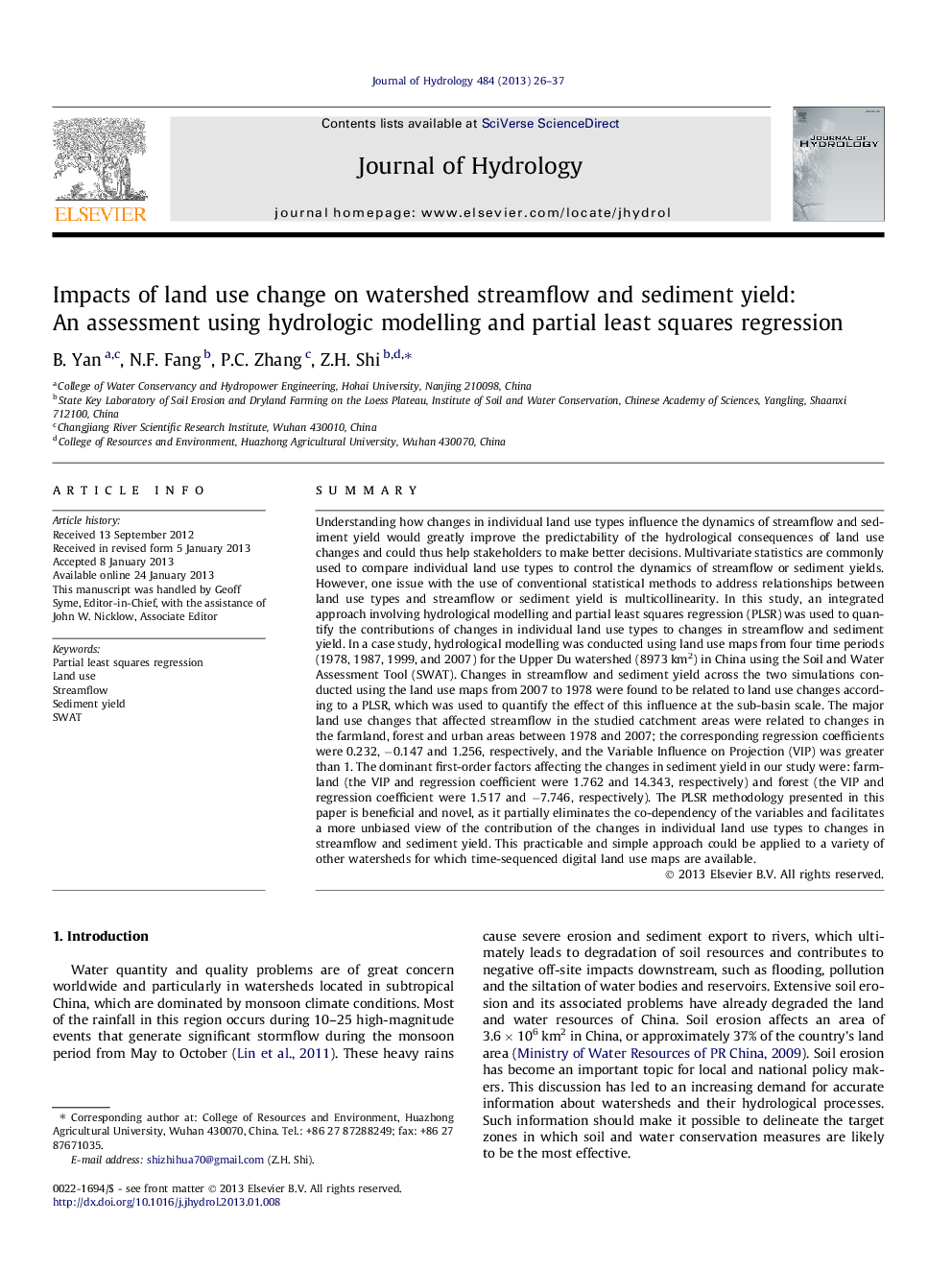| کد مقاله | کد نشریه | سال انتشار | مقاله انگلیسی | نسخه تمام متن |
|---|---|---|---|---|
| 6413819 | 1629964 | 2013 | 12 صفحه PDF | دانلود رایگان |
SummaryUnderstanding how changes in individual land use types influence the dynamics of streamflow and sediment yield would greatly improve the predictability of the hydrological consequences of land use changes and could thus help stakeholders to make better decisions. Multivariate statistics are commonly used to compare individual land use types to control the dynamics of streamflow or sediment yields. However, one issue with the use of conventional statistical methods to address relationships between land use types and streamflow or sediment yield is multicollinearity. In this study, an integrated approach involving hydrological modelling and partial least squares regression (PLSR) was used to quantify the contributions of changes in individual land use types to changes in streamflow and sediment yield. In a case study, hydrological modelling was conducted using land use maps from four time periods (1978, 1987, 1999, and 2007) for the Upper Du watershed (8973Â km2) in China using the Soil and Water Assessment Tool (SWAT). Changes in streamflow and sediment yield across the two simulations conducted using the land use maps from 2007 to 1978 were found to be related to land use changes according to a PLSR, which was used to quantify the effect of this influence at the sub-basin scale. The major land use changes that affected streamflow in the studied catchment areas were related to changes in the farmland, forest and urban areas between 1978 and 2007; the corresponding regression coefficients were 0.232, â0.147 and 1.256, respectively, and the Variable Influence on Projection (VIP) was greater than 1. The dominant first-order factors affecting the changes in sediment yield in our study were: farmland (the VIP and regression coefficient were 1.762 and 14.343, respectively) and forest (the VIP and regression coefficient were 1.517 and â7.746, respectively). The PLSR methodology presented in this paper is beneficial and novel, as it partially eliminates the co-dependency of the variables and facilitates a more unbiased view of the contribution of the changes in individual land use types to changes in streamflow and sediment yield. This practicable and simple approach could be applied to a variety of other watersheds for which time-sequenced digital land use maps are available.
⺠We examined how land use changes affect streamflow and sediment. ⺠Farmland, forest and urban areas are the strongest contributors to streamflow change. ⺠Farmland and forest also contribute to changes in sediment yield. ⺠PLSR is a practicable methodology and can eliminate variable co-linearity.
Journal: Journal of Hydrology - Volume 484, 25 March 2013, Pages 26-37
